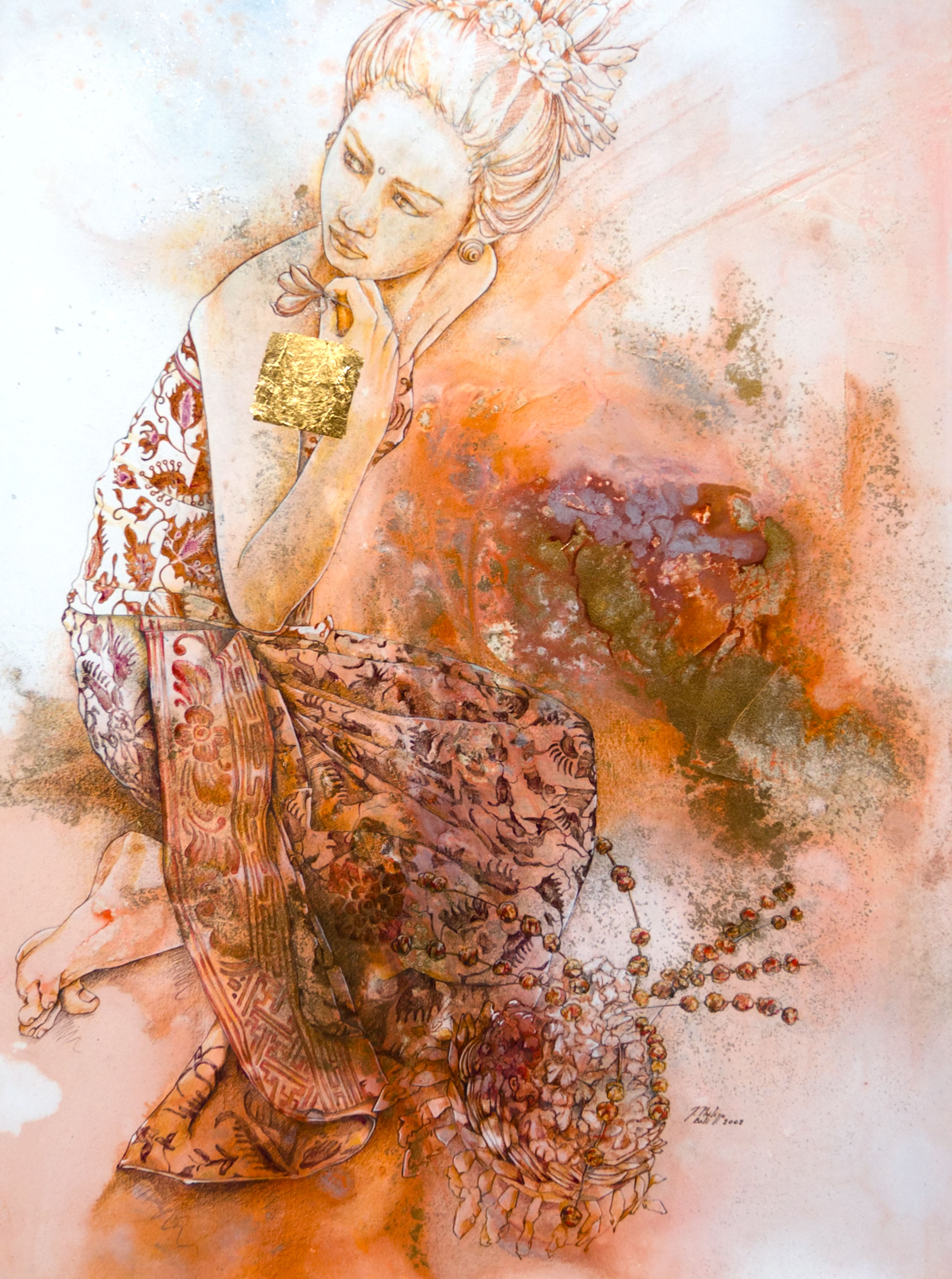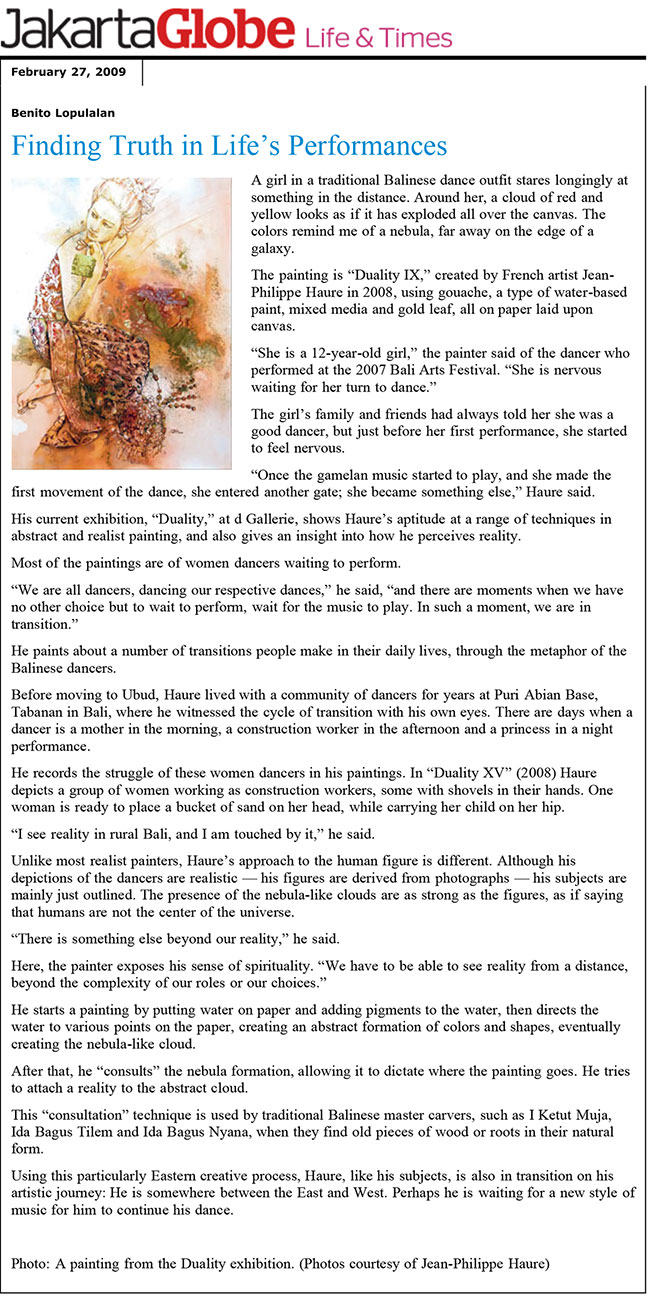Jakarta Globe, February 27, 2009
Finding Truth in Life’s Performances
Benito Lapulalan, The Jakarta Globe, Jakarta

A girl in a traditional Balinese dance outfit stares longingly at something in the distance. Around her, a cloud of red and yellow looks as if it has exploded all over the canvas. The colors remind me of a nebula, far away on the edge of a galaxy.
The painting is “Duality IX,” created by French artist Jean-Philippe Haure in 2008, using gouache, a type of water-based paint, mixed media and gold leaf, all on paper laid upon canvas.
“She is a 12-year-old girl,” the painter said of the dancer who performed at the 2007 Bali Arts Festival. “She is nervous waiting for her turn to dance.”
The girl’s family and friends had always told her she was a good dancer, but just before her first performance, she started to feel nervous.
“Once the gamelan music started to play, and she made the first movement of the dance, she entered another gate; she became something else,” J-PHILIPPE said.
His current exhibition, “Duality,” at d Gallerie, shows J-PHILIPPE’s aptitude at a range of techniques in abstract and realist painting, and also gives an insight into how he perceives reality.
Most of the paintings are of women dancers waiting to perform.
“We are all dancers, dancing our respective dances,” he said, “and there are moments when we have no other choice but to wait to perform, wait for the music to play. In such a moment, we are in transition.”
He paints about a number of transitions people make in their daily lives, through the metaphor of the Balinese dancers.
Before moving to Ubud, J-PHILIPPE lived with a community of dancers for years at Puri Abianbase, Gianyar in Bali, where he witnessed the cycle of transition with his own eyes. There are days when a dancer is a mother in the morning, a construction worker in the afternoon and a princess in a night performance.
He records the struggle of these women dancers in his paintings. In “Duality XV” (2008) J-PHILIPPE depicts a group of women working as construction workers, some with shovels in their hands. One woman is ready to place a bucket of sand on her head, while carrying her child on her hip.
“I see reality in rural Bali, and I am touched by it,” he said.
Unlike most realist painters, J-PHILIPPE’s approach to the human figure is different. Although his depictions of the dancers are realistic — his figures are derived from photographs — his subjects are mainly just outlined. The presence of the nebula-like clouds are as strong as the figures, as if saying that humans are not the center of the universe.
“There is something else beyond our reality,” he said.
Here, the painter exposes his sense of spirituality. “We have to be able to see reality from a distance, beyond the complexity of our roles or our choices.”
He starts a painting by putting water on paper and adding pigments to the water, then directs the water to various points on the paper, creating an abstract formation of colors and shapes, eventually creating the nebula-like cloud.
After that, he “consults” the nebula formation, allowing it to dictate where the painting goes. He tries to attach a reality to the abstract cloud.
This “consultation” technique is used by traditional Balinese master carvers, such as I Ketut Muja, Ida Bagus Tilem and Ida Bagus Nyana, when they find old pieces of wood or roots in their natural form.
Using this particularly Eastern creative process, J-PHILIPPE, like his subjects, is also in transition on his artistic journey: He is somewhere between the East and West. Perhaps he is waiting for a new style of music for him to continue his dance.

